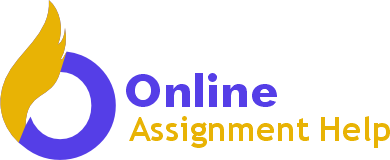Behavioural science for HR involves the building of an understanding of how people react psychologically and respond behaviourally to stimuli, interventions, and the environment. From behavioural science, we understand how most of our actions are decided under the influence of instinctive, intuitive, and automatic thought processes.
Behavioural science has a long history in organizational and business settings, especially understanding how employers and candidates make decisions before and at the recruitment process.
What is Behavioural Science in HRM?
In the context of HRM, behavioural science offers the key to enhancing the hiring process as well as improving the quality of their talent tool.
Essentially, behavioural science helps the HR departments de-bias recruitment, enhances the choice of words in job adverts to lure the best candidates suited for the job position.
In internal employee management, behavioural science can help in providing valuable insights into learning and development employee behavior which can come in handy when developing HRM systems, rewards systems, effective organization performance, and handling human resources management issues in your organisation.
Is Human Resources a Behavioural Science?
In the context of human resources, behavioural science derives its evidence from the social sciences like psychology, anthropology, and neuroscience. Besides, behavioural science helps HR understand employee behavior so as to optimize employee performance.
Since our brains are constantly processing information, it means that make short-cuts in whatever we do with the information. For this reason, we tend to get biased, procrastinate, and have sluggish behaviours. Regardless, in workplaces, we need to behave in a more objective manner.
HR professionals are managers of people’s behaviour in workplaces. By using what they know about behavioural science, they can look into ways an employee’s or recruit’s behaviour main not be in line with their organizational culture, customs, and requirements.
How Does Behavioural Science Help to Improve the Workplace?
Behavioural science of HR can be applied in improving the workplace in several ways. The applications can be either on organizational practices and routines or at the organizational culture level.
More often, behavioural science practices have got to do with the relationship HR or leadership fosters to employees, especially in the following areas:
- Performance
- Fostering innovation and creativity
- Nudging management
Performance
Effective and efficient performance management is anchored in behavioural science and is widely used in organizations worldwide.
Effective performance systems ensure a continuous process of performance enhancement and can be attained through setting individual and team or departmental goals that are aligned with the strategic aims of an organization.
The goal-setting theory is founded on the premise that people will do well when they set difficult goals for themselves as opposed to the generalist advice of “do your best”.
Fostering Innovation and Creativity
Promoting innovation and creativity is deeply rooted in the behavioral of science in the sense that innovation is a behavioural concept that is defined as being borne from unique thinking.
Other factors linking to behaviour that foster creativity and innovation include tolerance for failure and ambiguity, organizational warmth, future orientation in a company.
Essentially, innovation and creativity can be stimulated effectively by concentrating on enhancing these characteristics within a business.
Conversely, there are many other organizational factors anchored in behavioural science that kill employee innovation and creativity.
These include rigid hierarchies, workplace hostility, status symbols that reinforce rigid hierarchies such as job titles and dress codes, and timely pressure to submit interim outcomes.
Nudge Management
According to Thaler & Sunsten (2008), nudge management refers to the method of guiding behaviour in an intended direction by use of shoves, anchored in an understanding and hacking of irrational, emotional, and intuitive human behaviour.
Nudging management is used by HR managers to help improve productivity and performance in businesses by changing the way information is provided and utilized in the workplace. For instance;
- Short meeting times tend to enhance productivity
- Task efficiency can be improved by no-meeting days thus work is not interrupted
- Relaxation zones encourage communication and knowledge sharing, which in turn helps foster innovation and creativity
However, nudge management can be dangerous if wrongly used. For instance, it can open opportunities for deceit and since people’s behaviour is unpredictable, nudge management is never a one-size-fits-all solution.
What are the Examples of Behavioural Sciences?
Behavioural science also referred to as behavioural economics involves the study of human actions, especially how humans react and respond in the real world.
It captures multiple areas of study that include cognitive neuroscience, psychology, and economics. Besides, it captures behavioural aspects of law, biology, psychiatry, and political science.
Conclusion
Understanding the principles of behavioural science in the workplace makes managers think about HR initiatives can be communicated and promoted beyond the simple statements of facts and benefit features.
Besides, behavioural science and its concepts can help HR managers open up new ways of innovation and creative thinking while enabling them to deal more effectively and precisely for better employee performance.

